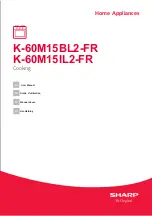
IO-6
Jade Range LLC
– A Middleby Company
Titan
TM
Series Heavy Duty Range
Model Series JTRH & JTRHE
INSTALLATION
HOOD AND VENTILATION
REQUIREMENTS
Combustion Air
This appliance should be installed in an environment
capable of providing adequate combustion air for
the range. Titan ranges and the BTU consumption
for each feature are listed under GAS BURNER
BTU SPECIFICATIONS chart at the beginning of
this manual. Locate the particular model/features
being installed and note its BTU output of the features
of each appliance, then add the BTU rate for all
burners operating at once. IT IS IMPORTANT THAT
ADEQUATE COMBUSTION AIR BE PROVIDED
FOR THE TOTAL BTU CALCULATED. Avoid
locating the appliance in a tightly confined area that
is incapable of providing sufficient combustion air.
Clear space MUST be provided in front of the
appliance to allow for entry of combustion air.
Ventilation
An exhaust hood with code-approved fire controls
and sufficient CFM exhaust must be provided to
remove excess heat/steam/grease, etc. from
cooking. The hood canopy must extend beyond all
sides of the appliance. Refer to Standard NFPA No.
96 (latest edition) for the removal of smoke and
grease laden vapors from commercial cooking
equipment. Use the BTU listings under GAS
BURNER BTU SPECIFICATIONS chart at the
beginning of this manual to calculate the total BTU,
and then furnish exhaust air CFM required. Room
ventilation (make-up air) must be provided to
compensate for air being removed by exhaust
system. Excessive negative room air pressure will
result if this is not done. Lack of exhaust and/or
excessive negative pressure will interfere with oven
and pilot light operation and result in pilot outage,
improper combustion, and poor overall performance.
BATTERY INSTALLATION
REQUIREMENTS
Ranges that are installed in a battery (two or
more) must be aligned, leveled, with manifolds
leveled and connected to each other.
Care must be exercised in leveling all appliances to
the same plane. This is important so that the 1-1/4
"
gas manifolds located at the front of each appliance
can be connected via plumbing unions. Failure to
level all appliances to the same plane will prevent
the proper interconnection of gas manifolds. If the
manifolds do not line up from one appliance to
another, re-check the level and correct so that
appliances are leveled to the same plane.
Install the first appliance in the position it will
occupy in the battery. Align and level the second
appliance to it and connect gas manifolds together.
Continue until all appliances are installed.
CAUTION
Provisions for gas and electrical shut offs must be
incorporated in the design of the “battery” and
accessible in the event the appliance is to be serviced.
CAUTION
All gas manifolds must align correctly to each
other. Failure to provide proper alignment can
damage gas manifolds, pilots and gas valves.
Adequate air supply must be provided for
combustion air. Provide a minimum of 36" of free
space in front of all appliances. Provide adequate
clearance for all air openings into combustion
chamber on all appliances.
Provide a gas regulator sufficient to supply adequate
gas flow for the total BTU requirement of all
appliances that have connecting manifolds. Set gas
regulators for 5.0" W.C. for natural gas regulators
and 10.0" W.C. for propane gas regulators.
Plate shelves and high shelves can be locked
together with standard 3/8" bolts.
When installed and individually connected to the
gas supply, each appliance must have its own
shutoff valve for servicing of the appliance.
Waldorf Configuration
In Waldorf configuration, appliances are grouped
together to form an appliance island. Care must be
exercised in leveling all appliances to the same plane.
Establishing a level line around the entire perimeter of
the island will assist in installing all appliances. This is
important so that the 1-1/4" gas manifolds located at
the front of each appliance can be connected via
plumbing unions. Failure to level all ranges to the same
plane will prevent the proper interconnection of gas






































